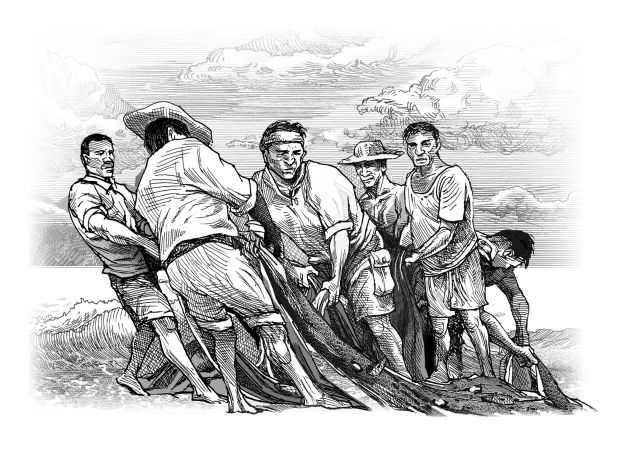
Ever since I saw a mosaic of the icon of Our Lady of Perpetual Help in a seminary garden, I have always had the desire to make something similar in my home. I told the wife about it and she warmed up to the idea. Together we took the first step towards its accomplishment—we purchased a manual, which we read for a while and then consigned to the shelf.
I thought of it again when we had a little house built in the garden. I had a part of the wall at the back, within view from the bedroom, reserved for the icon. In the end, we decided to install a statue of Our Lady instead.
A short time ago, a mosaic hunting fit seized me again and found me surfing the Web. This led me to reproductions of the mosaic panels in the Basilica di Sant’Apollinaire Nuovo in Ravenna, Italy. Theodoric the Great built the basilica in the sixth century as an Arian cathedral. (The Arians held that Christ was created by and so was less than the Father. In answer to this the Council of Nicaea formulated the Nicaean Creed.)
Of the twenty-six panels, one caught my attention—that which shows Christ calling Peter and Andrew to be his disciples. Matthew describes this scene in his Gospel. Jesus was walking by the Sea of Galilee when he saw the two brothers, Andrew and Simon (later called Peter), casting a net into the sea.
He said to them, “Follow me, and I will make you fishers of men.” Immediately they left their nets and followed him. (After that, Jesus gave a similar invitation to yet two brothers, James and John, who were then mending the nets with their father Zebedee, and they too dropped everything to follow Jesus.)
The mosaic features a beardless Jesus with a male companion standing at the edge of the sea. (Depictions of Jesus first appeared in the second century, but began featuring him with a beard only in the fourth.) With his right hand, Jesus gestures towards two men in a boat—the first, possibly Andrew, holds a paddle, while the second, Simon Peter, pulls a net chock-full with fish aboard. In the water, a big fish glides by in freedom born of innocence.
The influence of Arianism shows in the mosaic’s “naturalistic” interpretation of the Gospel scene. To help right matters, when the cathedral passed into Catholic hands, a halo was put around Jesus’ head.
Otherwise, the mosaic hews closely to the narrative. Jesus issued the call to Peter and Andrew while they were in the act of fishing—a detail the mosaic emphasizes by showing Peter in the process of pulling in a full net. If truth be told, it was a bad time for Jesus to make the call. Apparently, it was the height of the fishing season, and for the two fishermen everything was coming up fishes. And yet they left it all without thinking twice, a decision that changed their lives, for which we now celebrate the two humble fishermen, whose names would otherwise be unremembered.
In all probability, Peter and Andrew were themselves the source of Matthew’s story. In putting together an account of the life of Christ, Matthew, as well as Mark, Luke and John, did pretty much what mosaic artists do—fix into place the separate tiles retrieved from the remembrance of the community, from the stream of tradition.
As to the mosaic portraying the call of Peter and Andrew, as well as the rest of the panels, which collectively tell the story of Christ, in the end the adhesive that holds them together is the glue of recall, and the hues of the different tiles are in fact the colors of memory, the mosaic maker par excellence, which joins the broken images that remain of the waves of consciousness and dreams and out of them forms one meaningful
panel.